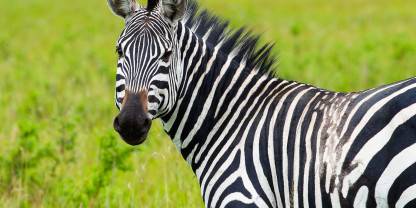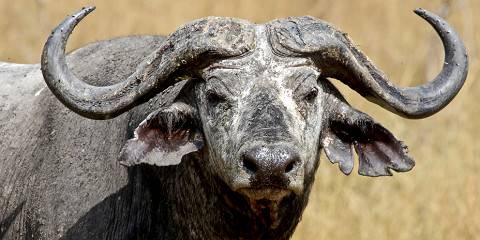Akagera National Park is Rwanda’s only reserve, and after recent reintroductions of rhinos and lions, you have a chance of spotting the Big Five. You’ll also see plenty of plains animals, such as giraffes, zebras, impalas and topi. In terms of pure wildlife viewing, Akagera can’t compete with the more famous parks in Kenya and Tanzania. However, the park is very scenic and the birdlife is particularly rewarding.

-
Best Time To Go
- June to September and mid-December to mid-February (It is drier and wildlife is easier to spot)
-
High Season
- June to September (The park is busiest at weekends)
-
Size
- 1,122km² / 433mi²
-
Altitude
-
1,286-1,718m /4,219-5,636ft
 View Photos
View Photos
 View Photos
+25
Photos
View Photos
+25
Photos
Pros & Cons
- Good wildlife viewing with the Big Five present
- Excellent birding includes many rarities, raptors and waterbirds
- Beautiful scenery with several forest-fringed lakes
- Night drives, boat trips and balloon safaris available, along with the usual game drives
- Big cats are relatively difficult to spot
- Tsetse flies (although harmless) can be annoying
Wildlife
Since African Parks assumed management of Akagera in 2010, wildlife numbers have been on the increase. Buffalo are abundant, and elephants are commonly seen on the lakeshores. After the first reintroductions of 2015, there are now more than 40 lions roaming the savannah plains. Leopards are common, but harder to spot. These secretive big cats are mostly seen on night drives.
More about Akagera’s wildlifeScenery
Akagera is particularly scenic and offers a wide diversity of habitats in a small area. Visitors can drive along a string of forest-fringed lakes and wetlands fed by the Akagera River. Tall mountains form a lovely backdrop to the ever-changing vegetation, which includes papyrus swamps and acacia woodland.
Activities
Game drives allow you to see a good selection of Akagera’s wildlife. It’s possible to self-drive, assuming you have a sturdy 4x4. Guided night drives increase the odds of encountering nocturnal creatures such as leopards, bush babies and genets. Boat trips are excellent for hippos, crocodiles and waterbirds. Privately run balloon safaris offer an aerial overview of the lush scenery. For deeper insight, join a Behind-the-Scenes tour or Walk-the-Line patrol of the boundary fence.
Weather & Climate
Akagera is located near the equator and has a consistent moderate to warm climate. Temperatures are very uniform throughout the year. The average nighttime temperature is about 10°C/50°F below the average daytime temperature, therefore warm clothing is recommended for early morning game drives. The main Dry season runs from June to September, but there is a relatively dry spell from mid-December to mid-February too.
More about the weather and climateBest Time To Visit
Although Akagera can be visited at any time, the best wildlife-viewing months are from June to September. This corresponds with the main Dry season, when animals are drawn to the lakes as a source of water. At this time the bush is not as lush either, which makes spotting animals a bit easier. Mid-December to mid-February, a dry spell in the Wet season, is also a good time to visit.
More about the best time to visit



